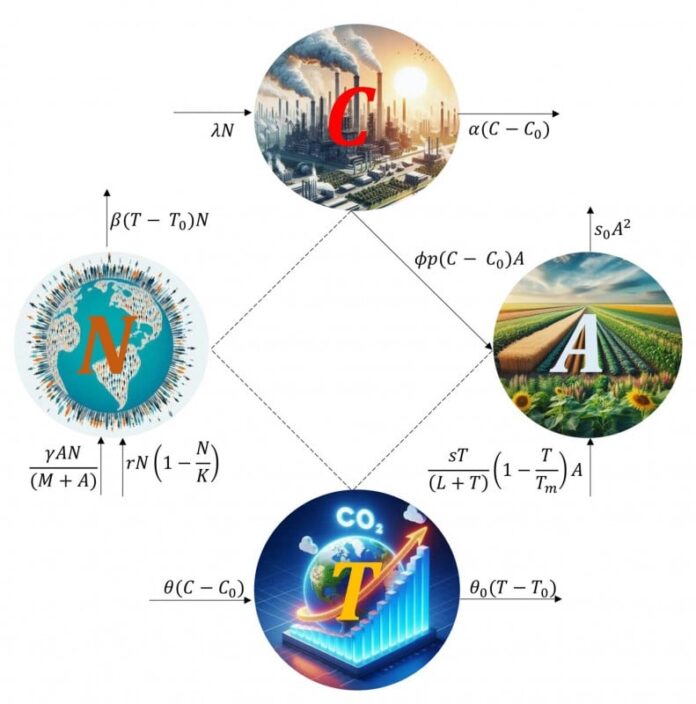Scientists have identified a critical tipping point in global food production as carbon dioxide levels rise in the atmosphere. New research using advanced mathematical modeling shows that while plants initially benefit from increased CO2 levels, this advantage disappears once temperatures exceed a critical threshold, highlighting the urgent need for heat-resistant crop varieties.
Published in Chaos | Estimated reading time: 4 minutes
Researchers at Banaras Hindu University have decoded the complex puzzle of atmospheric carbon dioxide and crop yields using innovative mathematical approaches. Their study reveals the challenges and opportunities in adapting agriculture to climate change and underscores the importance of developing crops that can withstand heat stress.
The research team’s model captures the dynamic relationship between rising CO2 levels, temperature changes, and crop productivity. Lead researcher A.K. Misra explains that while increased CO2 can initially boost crop growth, excessive heat can lead to reduced yields, creating a delicate balance with significant implications for global food production.
The study uncovers complex seasonal patterns and chaotic behaviors in crop responses to climate change, suggesting that rising temperatures could have unpredictable effects on agriculture. The findings emphasize the need for sophisticated adaptation strategies to maintain productivity under changing environmental conditions.
The research highlights the importance of developing crops with increased temperature tolerance to ensure food security in a warming world. By breeding or using heat-resistant varieties, farmers can mitigate the impact of rising temperatures on crop yields and sustain food production.
The team plans to expand their model to incorporate additional variables like insect populations, water availability, and soil quality to enhance localized predictions and adaptation strategies for a changing climate.
Glossary
- CO2 fertilization effect: The temporary boost in plant growth due to increased atmospheric carbon dioxide levels
- Autonomous systems: Mathematical models that do not depend on time, used to study general patterns
- Nonautonomous systems: Mathematical models that include time-dependent variations, such as seasonal changes
What happens to crop yields when CO2 levels first begin to rise?
Initially, crops experience increased growth due to the CO2 fertilization effect, but this benefit diminishes once temperatures exceed a critical threshold.
Why did the researchers use both autonomous and nonautonomous models?
To capture both general patterns and seasonal variations in crop responses to climate change, revealing complex behaviors like periodic oscillations and chaos.
What solution does the research suggest for maintaining crop yields?
Developing crop varieties with higher temperature tolerance to better withstand the heat stress associated with rising CO2 levels.
What additional factors will the researchers study next?
They plan to incorporate variables such as insect populations, water availability, soil quality, and nutrient levels into their model.
Enjoy this story? Subscribe to our newsletter at scienceblog.substack.com.




